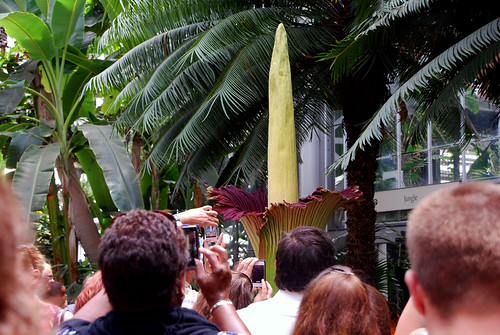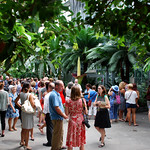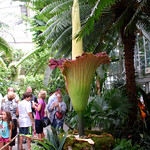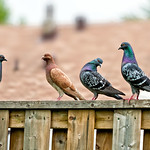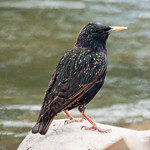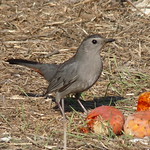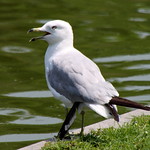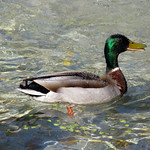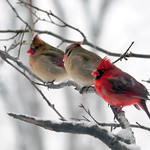NASA’s GOES satellite took this amazing picture of today’s storm at 9:45 this morning. The DC area is obscured by snow and clouds, obviously, but you can see the storm covering the whole mid-Atlantic north of Florida.
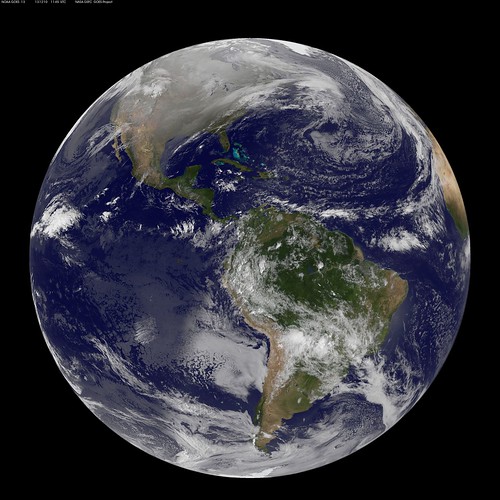
Image from NOAA/NASA GOES Project.
Average Rating: 4.6 out of 5 based on 164 user reviews.
December 10th, 2013 | Permalink
Tags: environment
When the sun rose over DC’s east horizon on Sunday morning, it was in the midst of a partial solar eclipse. The moon was passing directly between Earth and the sun, obscuring the sun as seen from Earth.
To see the event, I woke up early and set up my camera at the best easterly-facing view I could think of – the George Washington Masonic Memorial in Alexandria. Here’s what I saw:
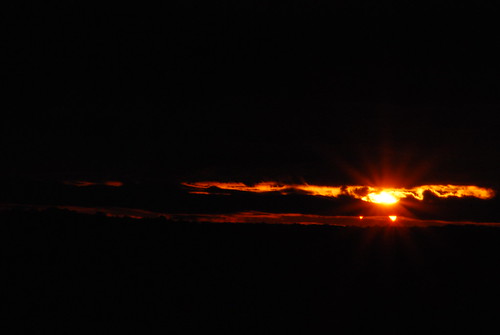 |
 |
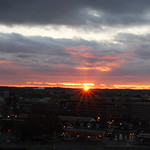 |
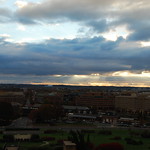 |
| Eclipse over Alexandria. Full set of 25 pictures is on flickr. |
Average Rating: 5 out of 5 based on 276 user reviews.
November 4th, 2013 | Permalink
Tags: environment, fun
One of the world’s rarest and stinkiest giant flowers is blooming now at the US Botanical Gardens. But if you want to to see it, you have to act fast. It will likely wilt in just a few days.
The titan arum can reach 10 feet in height, smells like rotting dead flesh, and can go decades between blooms. When a bloom does happen, it’s a big draw at the usually-quiet botanical garden.
I went yesterday and took a few pictures. I barely noticed the smell.
Average Rating: 4.6 out of 5 based on 185 user reviews.
July 23rd, 2013 | Permalink
Tags: environment, galleries, parks
Constitution Avenue used to be a canal, and two creeks used to flow through central DC. David Ramos produced a series of maps showing where they went.
Imagine what a different city Washington might be today if these had been kept in place.
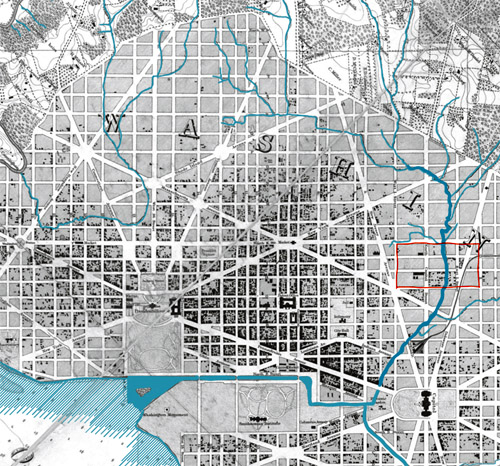
Image from David Ramos on ImaginaryTerrain.com.
Average Rating: 4.7 out of 5 based on 190 user reviews.
June 3rd, 2013 | Permalink
Tags: environment, maps
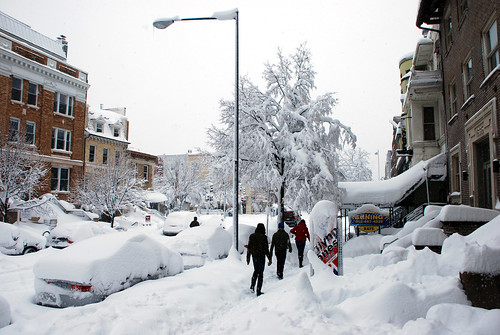
R Street in the snow. This was not taken today.
Average Rating: 5 out of 5 based on 172 user reviews.
March 6th, 2013 | Permalink
Tags: environment
This picture of Boston was taken by an American Airlines pilot shortly after the blizzard last weekend.
DC, on the other hand, is in the midst of its least snowy 2 year period on record, which comes shortly after our own 2010 snowpocalypse. But that’s OK. Extreme weather all the time probably isn’t climate change, right? Gotta be a hoax.
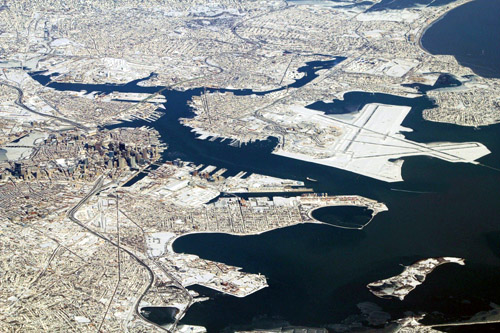
Boston in the snow. Image from reddit.
Average Rating: 4.6 out of 5 based on 287 user reviews.
February 14th, 2013 | Permalink
Tags: environment
|

Pollution? What pollution?
Image from EnvironmentBlog. |
China appears to be learning some poor lessons from the United States regarding how to handle environmental problems.
A few days after North Carolina made news by trying to outlaw sea level rise, China is demanding that foreigners stop reporting on Chinese air pollution.
As offensive as both of these strategies are, I actually wonder if they are not indication that some progress is being made on the acceptance of environmentalism as a legitimate global issue. Might these attempts to sweep environmental problems under the rug actually be a tacit acknowledgment that environmental problems exist? As opposed to just denying the problem exists at all. After all, why bother trying to hide something that you don’t think is a problem?
Anyway, this seems like a good opportunity to post an interesting map. This is from NASA, and shows global distribution of particles in the air. It includes both natural and man-made sources, which is why places like the Sahara Desert are highlighted. But holy smokes, check out China.
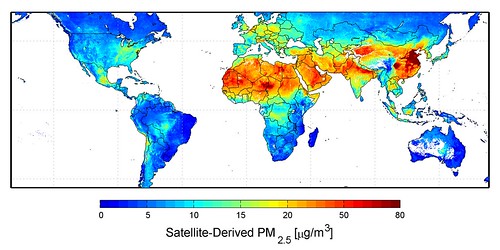
Average Rating: 4.4 out of 5 based on 169 user reviews.
June 5th, 2012 | Permalink
Tags: environment
Yesterday on Twitter I linked to a neat map of tree biomass in the 48 contiguous states. Some people had trouble opening it and asked me to show it here. I’m happy to oblige.
The map is based on data from NASA, and originally came from Reddit. Correction: Here is the source.
Click the image for the full-size version.
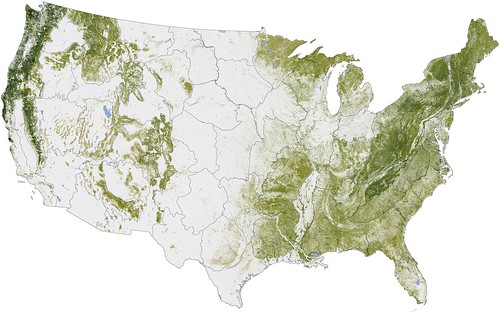
Average Rating: 4.8 out of 5 based on 216 user reviews.
January 12th, 2012 | Permalink
Tags: environment
Animals are smarter than we give them credit for. They know roads are dangerous to cross, and know how to avoid doing so.
According to a study by the University of Maryland, almost 60 different species of animals have been spotted using underground drainage culverts to safely cross roads. Not only do they use the tunnels, they also show preferences regarding tunnel design, and teach their young how to use the tunnels safely. Deer avoid tunnels with rocky floors, herons like tunnels big enough to flap their wings in, and just about all the observed species like tunnels with unobstructed views.
The study used motion-capture cameras to photograph thousands of animals using the tunnels. A few examples are reproduced below. They clearly show why this behavior is as beneficial to humans as it is to animals: no car driver wants to hit a giant horned buck or a stinky skunk.
Average Rating: 4.7 out of 5 based on 194 user reviews.
December 12th, 2011 | Permalink
Tags: environment, galleries, transportation, urbandesign















